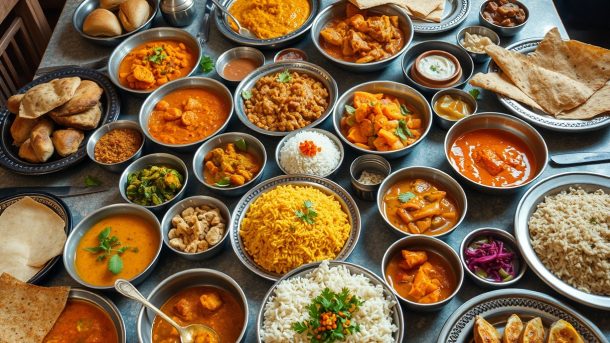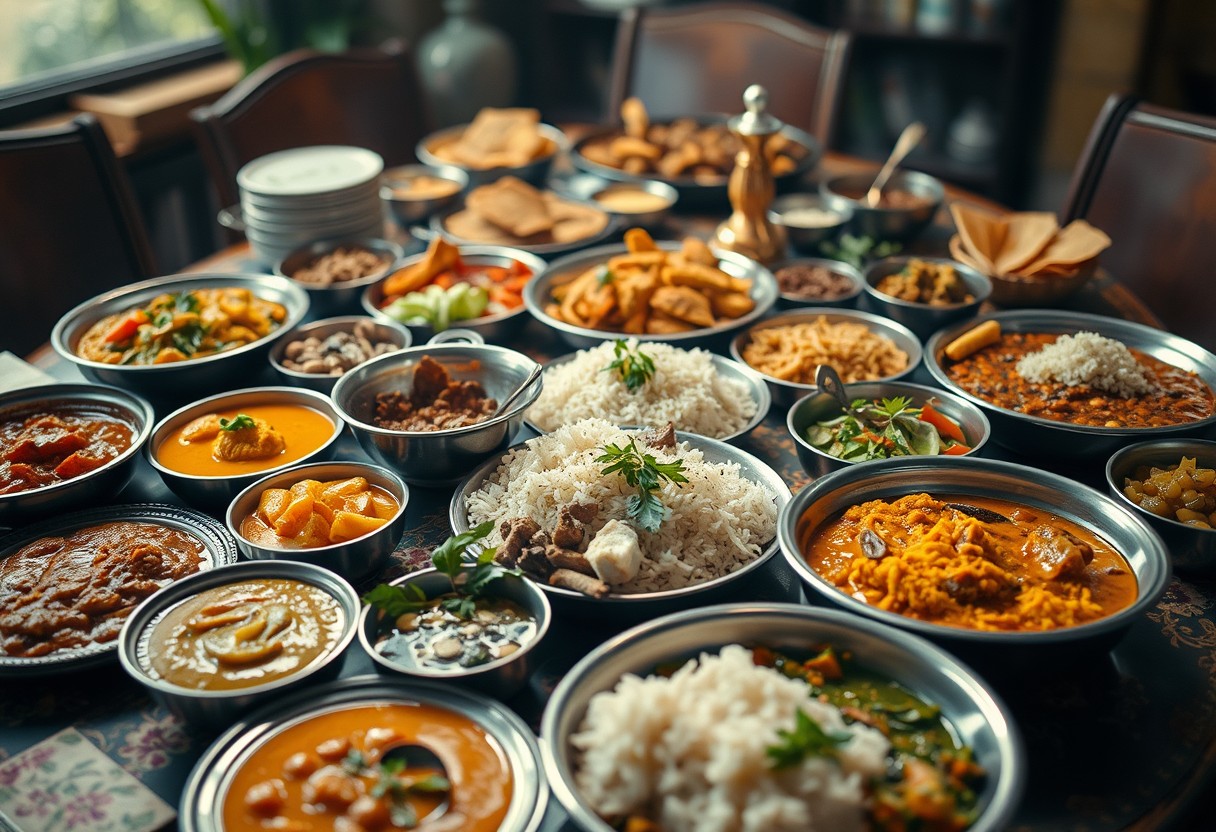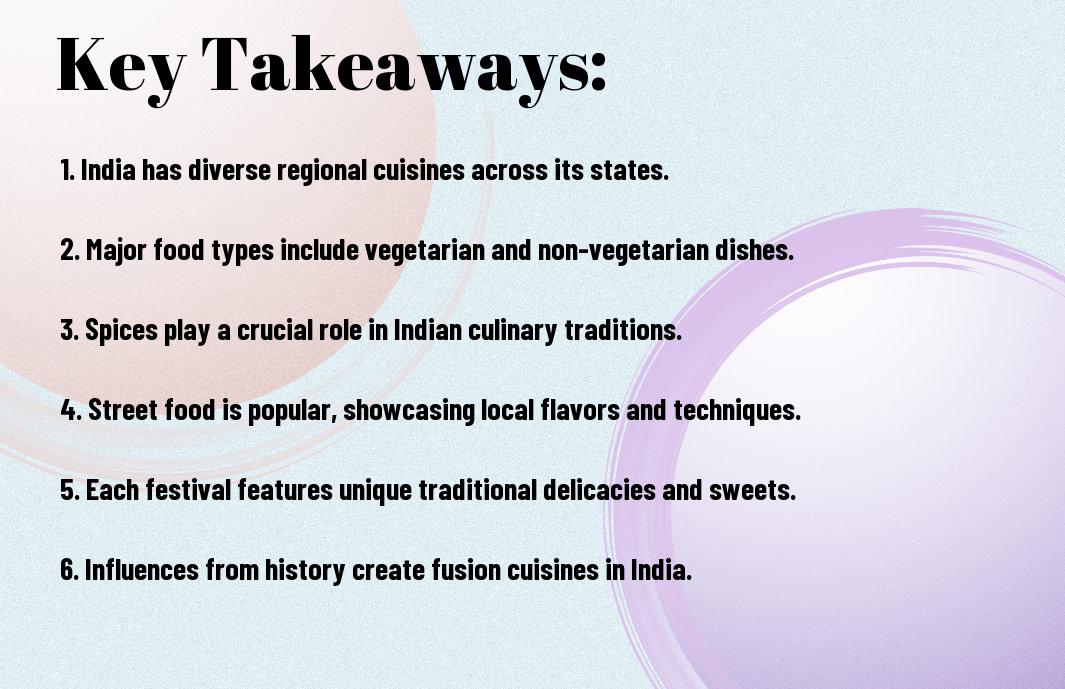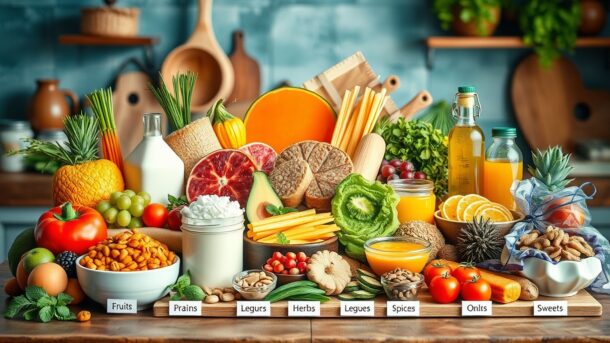Most food enthusiasts find themselves in awe of the diverse culinary landscape that India offers, making it challenging to determine which cuisine reigns supreme. Every region boasts its unique flavors, ingredients, and cooking techniques that reflect its history and culture. You may ponder whether the rich, spicy curries of North India, the coconut-infused dishes of the South, or the delectable street food from the bustling markets capture your palate best. Join us as we explore the myriad of Indian cuisines to help you identify your personal favorite.

Key Takeaways:
- Diversity: India boasts a rich variety of regional cuisines, each offering unique flavors and ingredients that reflect local culture and traditions.
- Popular Cuisines: Some of the most renowned cuisines include North Indian (especially Punjabi and Mughlai), South Indian (notably Tamil and Andhra), and Western Indian (like Gujarati and Marathi).
- Personal Preference: Determining the “best” cuisine is subjective and largely depends on individual taste preferences, dietary restrictions, and personal experiences with different Indian dishes.
Overview of Indian Cuisines
To truly appreciate the culinary landscape of India, one must explore the various regional cuisines that reflect the country’s rich cultural heritage. Each region offers a unique blend of flavors, ingredients, and cooking techniques influenced by its climate, geography, and traditions. From the fiery spices of South India to the subtle flavors of North Indian dishes, the diversity is as vast as the nation itself, inviting you to examine an extraordinary gastronomic journey.
Regional Diversity
With each region of India presenting its own distinctive cuisine, you will discover a kaleidoscope of tastes and textures. The North is known for its hearty breads and rich gravies, while the South shines with its rice-based dishes and coconut-enhanced flavors. In the East, you will find delectable sweets and fish delicacies, and the West boasts a variety of snacks and vibrant curries, showcasing the vast culinary diversity within India’s borders.
Influences on Indian Cuisine
On your exploration of Indian cuisine, you’ll notice that it is a beautiful tapestry woven from various historical and cultural influences. From ancient times to modern globalization, India’s culinary practices have evolved, incorporating spices, herbs, and cooking styles introduced by trade and conquest. Each influence has left a lasting impact, making Indian food a delightful amalgamation of flavors that speaks to its storied past.
For instance, the Mughal Empire heralded the introduction of rich, aromatic dishes that blended Indian spices with Persian techniques, reflecting a fusion of cultures. Similarly, colonial influences brought ingredients like potatoes and tomatoes, which are now staples in many Indian recipes. With global exchanges, you’ll see further adaptations, making Indian cuisine both traditional and contemporary, satisfying both local palates and those of international food lovers. This dynamic adaptability has ensured that India’s culinary offerings remain vibrant and ever-evolving, inviting you to explore further.
Popular Cuisines Across India
If you’re wondering which cuisine to explore, India offers a diverse palette of flavors and styles. Each region boasts distinct culinary practices that make Indian cuisine incredibly rich. To get you started, check out these Top Dishes to Try If You Are New to Indian Food. You’ll be amazed at what you can discover!
North Indian Cuisine
For fans of rich, creamy dishes and tantalizing spices, North Indian cuisine is a treasure trove. It often features hearty staples like naan and various curries, providing a satisfying meal that warms the soul.
South Indian Cuisine
India is renowned for its vibrant and health-conscious South Indian cuisine, characterized by its rice-based dishes and tangy sambar. You will find an array of dosas, idlis, and unique chutneys that tantalize the taste buds.
Indian cuisine in the south boasts a diversity of flavors and techniques, with dishes often being vegetarian-friendly and using ingredients like coconut, rice, and lentils. The emphasis on fresh herbs and spices makes each meal an exciting culinary experience, while the balance of flavors is truly remarkable.
East Indian Cuisine
North emphasizes the use of rice, fish, and mustard oil, which are central to East Indian cuisine. Signature dishes like maacher jhol (fish curry) and pakhala (fermented rice) showcase this region’s love for seafood and fermented flavors.
Indian cuisine in the East is known for its unique blend of flavors, combining sweet, sour, and spicy elements. Desserts also hold a special place, with sweets like rasgulla and sandesh embodying the rich culinary heritage of Bengal. This region is a haven for foodies who appreciate a variety of textures and tastes.
West Indian Cuisine
Indian cuisine from the West is a delightful mix of spices and cooking techniques, highlighting dishes like dhokla and pav bhaji. Rich in flavors and ingredients, this region offers a variety of snacks and desserts that excite your palate.
It is fascinating how West Indian cuisine varies from state to state, with each region offering distinct flavors. From the spicy curries of Maharashtra to the delectable sweets of Gujarat, the West is a gastronomic adventure waiting to unfold. You are sure to find something that captivates your taste buds in this diverse culinary landscape.
Signature Dishes and Ingredients
All Indian cuisines boast a rich tapestry of signature dishes and unique ingredients that reflect the diverse regional influences across the country. Each state brings its own flair, traditions, and flavors, making Indian food an unforgettable experience for any culinary enthusiast. Whether you’re exploring street food or gourmet dishes, there’s something for everyone to relish in India’s gastronomic landscape.
Iconic Dishes
The iconic dishes of India capture the essence of its culinary traditions. From the sumptuous butter chicken of North India to the fiery spicy seafood curries of the South, every plate tells a story of regional heritage and flavor. You can’t miss trying dishes like biryani, dosas, and chole bhature to truly appreciate India’s culinary diversity.
Essential Spices and Ingredients
Essential to Indian cuisine are its spices and ingredients, which elevate every dish with bold flavors and aromatic profiles. You’ll find staples like cumin, coriander, turmeric, and chilies in most recipes, each contributing to the complex layering of tastes that characterize Indian cooking.
A unique aspect of Indian cuisine is its reliance on various spices that not only add flavor but also offer health benefits. For instance, turmeric is celebrated for its anti-inflammatory properties, while cumin aids digestion. Incorporating these spices into your cooking allows you to experience authentic Indian flavors right in your own kitchen, giving you a deeper appreciation for this vibrant cuisine.
Factors Influencing Preferences
Not all cuisines in India are created equal in your eyes; various factors influence your preferences when it comes to food. Here are some key elements to consider:
- Your regional background
- Street food culture
- Health and dietary restrictions
- Cultural and family traditions
- Exposure to different cuisines
Thou may find that your taste evolves over time as you encounter more diverse offerings from different regions. If you’re eager to learn more about what to try, check out this India Food: 25 Most Popular Traditional Dishes To Eat In ….
Cultural Significance
Cultural influences play a vital role in shaping your food preferences. Each region in India boasts its own heritage, which is reflected in unique ingredients, cooking methods, and traditional recipes. These distinctions not only affect what you choose to eat but also how you engage with various culinary practices, ensuring a rich tapestry of flavors that can evoke nostalgia or pride.
Personal Taste and Experiences
For many, personal experiences and individual tastes significantly influence food preferences. You may cherish memories tied to family meals or special occasions where specific dishes were served. These cherished experiences create an emotional bond with certain cuisines, making them more appealing to you.
The more you explore and dine, the more your taste buds evolve. You might find yourself gravitating toward certain spices or cooking styles that remind you of a beloved memory. Whether trying new dishes at a local restaurant or revisiting a favorite family recipe, the journey of exploring Indian cuisine will shape your preferences even further.

Summing up
Ultimately, determining the best cuisine in India is subjective and relies heavily on your personal taste preferences and experiences. Each regional cuisine, from the spicy curries of South India to the rich, savory dishes of North India, offers unique flavors and ingredients that celebrate the country’s diversity. You may find yourself drawn to different cuisines depending on your mood or the specific dishes you try. Exploring these culinary delights will not only broaden your palate but also deepen your appreciation for India’s vibrant food culture.
FAQ
Q: Which cuisine is considered the best in India?
A: The term ‘best’ can be subjective when it comes to Indian cuisine as it varies based on individual preferences and regional specialties. However, some popular cuisines include North Indian (famous for its rich curries and bread), South Indian (noted for its rice dishes and dosa), and street food from various regions that reflects the local taste and culture.
Q: What are the distinct features of North Indian cuisine?
A: North Indian cuisine is known for its use of dairy products like paneer and yogurt, along with a variety of spices. Popular dishes include butter chicken, dal makhani, and naan bread. The cuisine often emphasizes robust flavors and includes a range of vegetarian and non-vegetarian options.
Q: How does South Indian cuisine differ from North Indian cuisine?
A: South Indian cuisine primarily features rice as its staple grain, with dishes often seasoned with coconut, curry leaves, and mustard seeds. Common dishes include idli, dosa, and sambar. It typically has a lighter feel compared to the creamier North Indian dishes and showcases a unique balance of flavors through the use of spices and herbs.
Q: Is there a specific region in India known for its street food?
A: Yes, regions like Mumbai, Delhi, and Kolkata are famous for their vibrant street food culture. In Mumbai, vada pav and pav bhaji are local favorites, while Delhi is known for chaat and parathas. Kolkata boasts puchka and kathi rolls, showcasing a diverse range of flavors that highlight innovative culinary practices.
Q: Are there any renowned Indian cuisines for vegetarian diets?
A: Absolutely! Indian cuisine offers an extensive variety of vegetarian options, particularly in regions like Gujarat and Rajasthan which are predominantly vegetarian. Dishes like thali, aloo gobi, and chole bhature are rich in flavor and diversity, making Indian vegetarian cuisine highly regarded worldwide.







